Portfolio
From the Fall 2010 issue of Wavelength Magazine. Read the entire magazine online.
By Michael Powers
When a rare tranquil day like today comes to the often tempestuous Strait of Juan de Fuca, it becomes magical. The bow of our sleek double kayak slices smoothly across the mirror-like surface of the water, and long ripples radiate out in all directions to undulate hypnotically beneath the light of the summer sun. Our sea kayaking team from California, the Tsunami Rangers, paddles languidly westward towards historic Cape Flattery on the distant horizon.
Riding with me today in the front cockpit of my open-deck Tsunami X-2 double kayak is a young kayak guide named Sasha, who has traveled all the way from New Zealand to paddle with the Rangers. We follow the others on a slalom course through the rock gardens that line the rugged shoreline, searching for a protected campsite for the night. Sasha’s enchantment with the other-worldly panorama of storm-weathered stone and serpentine kelp forests unfolding before us is palpable, and I strive to capture the magic of the scene with my little waterproof digital camera.
Sea kayaking and watersports in general evolved from the most basic of human needs: hunger. Millennia ago, ingenious stone-age hunter/gatherers began to craft vessels from driftwood, animal skin and bone so they could pursue the game they could see abounding in the sea. Today those traditions still endure, although fortunately for the animals our objectives have evolved somewhat. Now most homo sapien paddlus are out on the water purely for adventure and exercise, and the hunter/gatherer instincts have been moderated to collect images rather than fresh protein from the sea.
Fortunately too for modern paddlers, an astounding array of gear has become available with which to venture out beyond the shore in relative safety and comfort. Along with kevlar and carbon fibre have come quantum leaps in image gathering equipment for watersport photography. Many different waterproof digital cameras are available today, ranging from lightweight little disposables
to high-quality professional level models.
Here are some images and commentary from many rewarding years of hunting and gathering around our water world with a paddle and a camera, which I hope will inspire and empower you to better document your own watersport adventures – good luck!
Shooting from shore with a (non-waterproof) SLR camera and different length lenses allows for different perspectives of watersports and the sometimes unique environments where they are taking place. Here an extremely wide-angle fisheye lens allowed me to frame the paddler dramatically in a sea arch as he paddled in a rocky cove on the northern California coast.
On rare occasions where there are no other options, we may have to compromise and make use of smelly, fossil fuel burning watercraft to approach and photograph watersport activities. For a single day off South Georgia Island in Antarctica I gave up paddling to photograph my kayaking expedition teammates from a Zodiac powerboat, driven at high speed by a young crewman from our mothership Russian icebreaker as the kayakers were approaching historic Drygalski Fiord, located near the usually stormy southernmost tip of South Georgia Island.
To capture this image I mounted a small waterproof camera on the bow of my kayak pointed back towards me, oriented to shoot vertically with the camera on self-timer. I paddled out into the surf zone, and whenever I saw a nice wave building up outside I would quickly reach forward with my paddle and press the shutter button. Then I would paddle hard to catch the wave. Occasionally it worked!
The Tsunami Rangers are known for close-up, action-packed photos and videos of kayakers crashing through waves and over rocks, but sometimes it is refreshing to step back and take a more contemplative, wide angle shot that places your subject in the context of a scenic environment. Here in a beautiful and well-hidden little cove on the southern Oregon coast, surrounded by high cliffs and inaccessible except from the water, I disembarked from my kayak and climbed up on a rock promontory to capture a wide angle shot of Ranger Tim Sullivan as he prepared to re-enter the sea.

On a summer paddling adventure among the San Juan Islands, we arrived at tiny Patos Island just before sunset. I landed and ran to set up my camera, equipped with a 300mm telephoto lens on a tripod, while my companions continued to paddle their baidarka-style double kayak as the sun was setting. I knew from experience that shooting from shore with a long lens would make the sun appear large in relationship to the kayak in the foreground and add a dramatic mood to the photograph.
Sometimes the photo magic lingers long after the paddling is done for the day. At a well-hidden micro-beach on the southern Oregon coast, the sky continued to grow even more vivid after sunset, inspiring the Tsunami Rangers to break into a martial arts reverie. I mounted my SLR on a tripod and shot the after-glow.
Michael Powers is a professional adventure photojournalist, widely published, and a commander in the Tsunami Rangers, an “extreme condition” sea kayaking team. He and fellow Ranger commander Eric Soares wrote the book Extreme Sea Kayaking, published by McGraw-Hill.

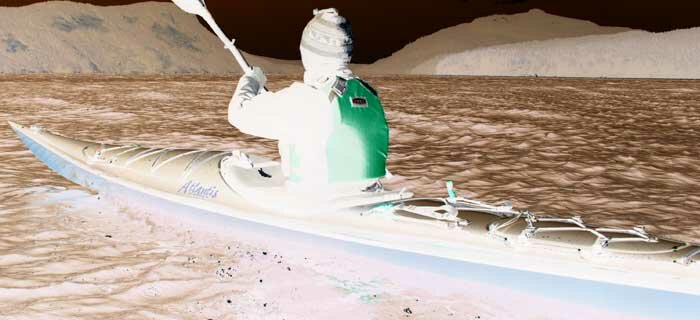
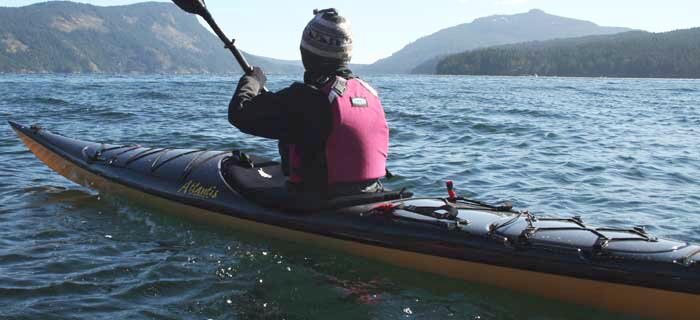
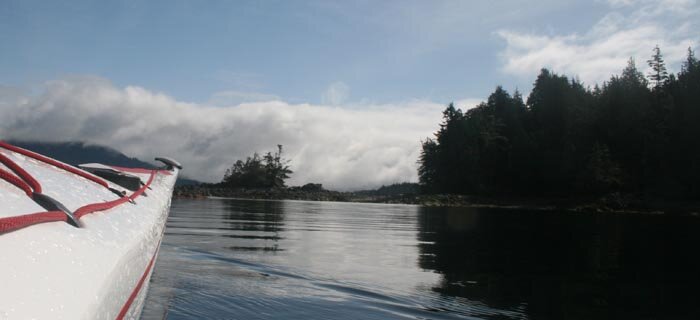
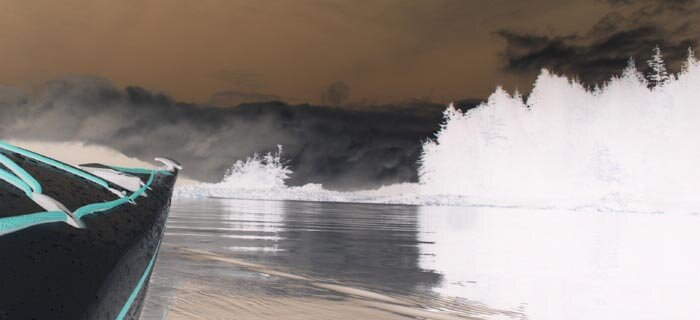
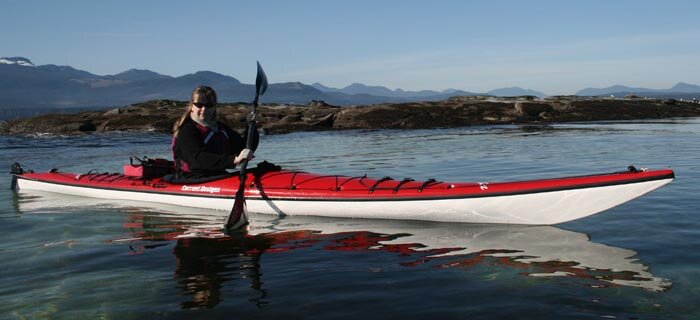







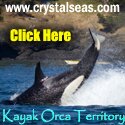
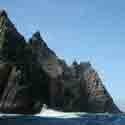













 This site uses valid HTML, CSS and Flash. All content Copyright © 2010 Wild Coast Publishing.
This site uses valid HTML, CSS and Flash. All content Copyright © 2010 Wild Coast Publishing.